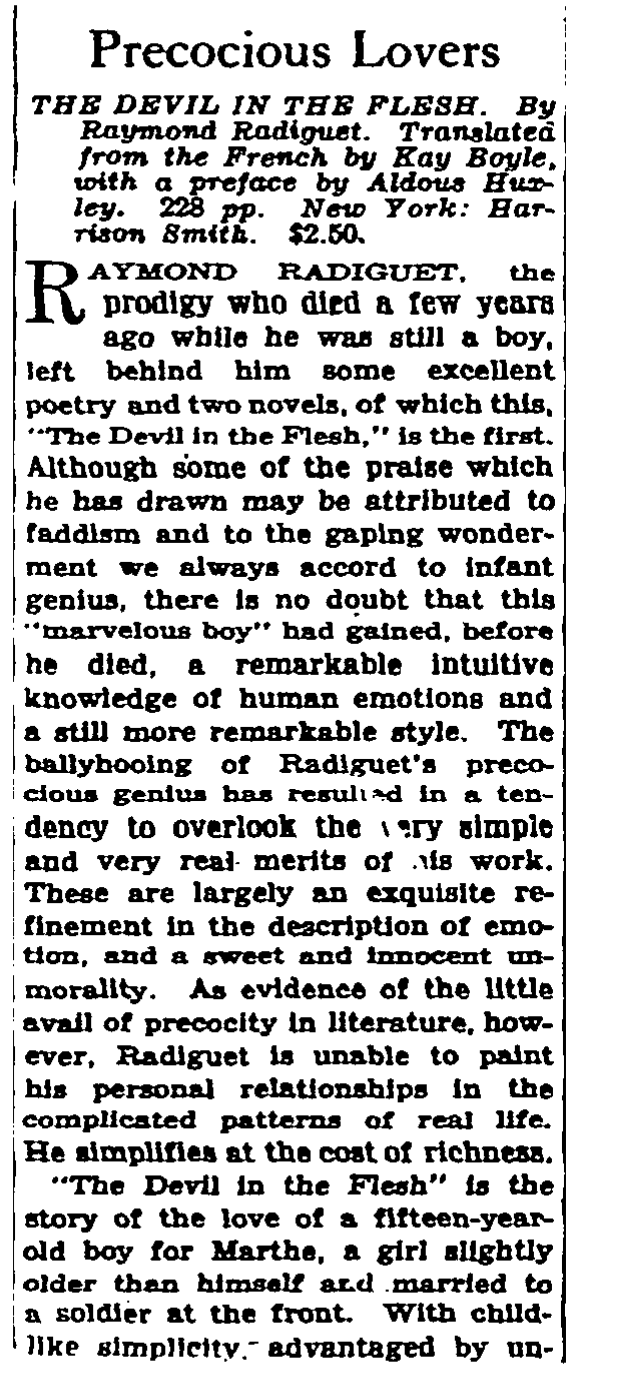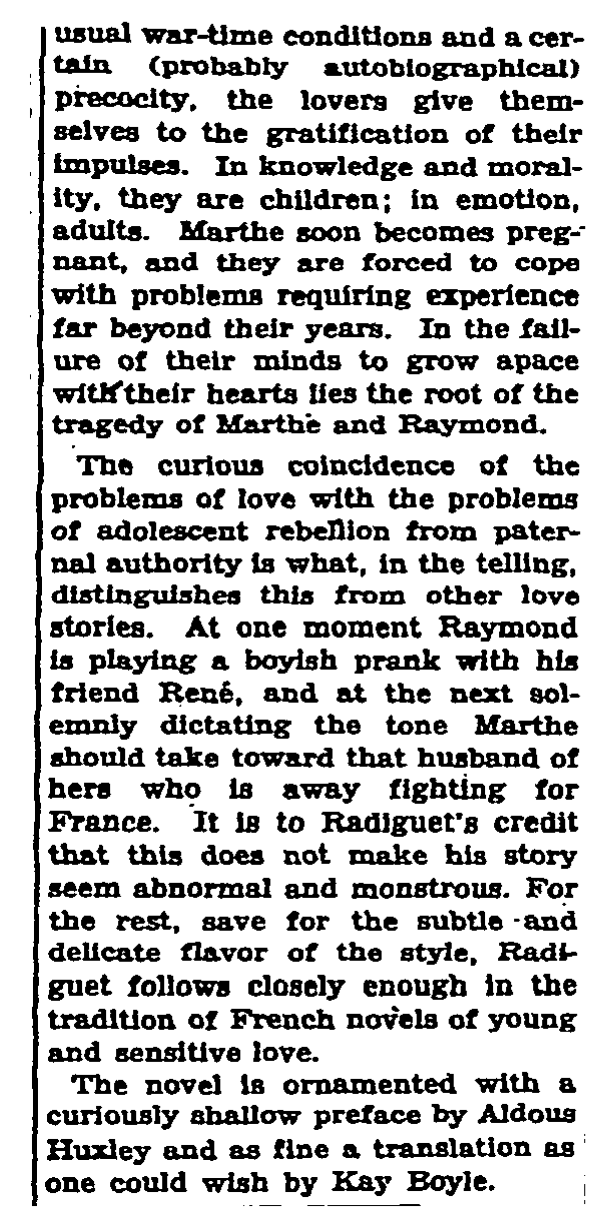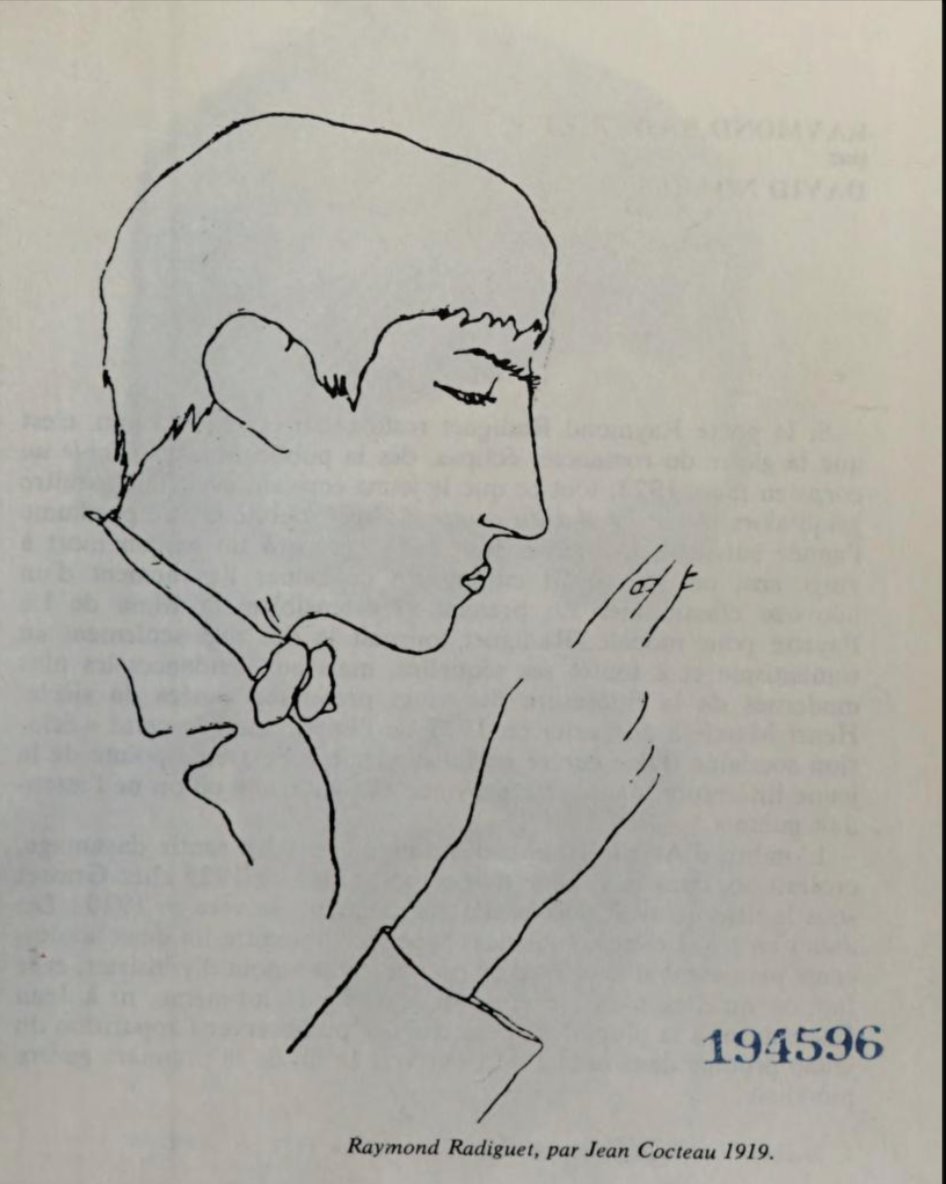Devil in the Flesh by Raymond Radiguet (1923)
- Veronique Goguen
- Jan 8, 2022
- 3 min read
Updated: May 7, 2023
"I at least regarded her as the only persoen who would have been worthy of my love, which amounts to saying I still loved her."

"But I loved (her) too much to regard our happiness as a crime."
Description
The Devil in the Flesh, one of the finest, most delicate love stories ever written, is set in Paris during the last year of the First World War. The narrator, a boy of sixteen, tells of his love affair with Martha Lacombe, a young woman whose soldier husband is away at the front. With an accuracy of insight that is almost ruthless, he describes his conflicting emotions—the pride of an adolescent on the verge of manhood and the pain of a child thrust too fast into maturity.
The liaison soon becomes a scandal, and their friends, horrified and incredulous, refuse to accept what is happening—even when the affair reaches its tragic climax.


Review
Hailed by Jean Cocteau as a "masterpiece"
Written in spare, haunting prose when Raymond Radiguet was still a teenager, and loosely based on his life, The Devil in the Flesh became an instant bestseller and its author was hailed as a genius, before dying tragically at the age of twenty. It is a work of startling imagery and subtle beauty about power, betrayal, and passion that expresses all the anguish and joy of adolescence.
- Penguin Classics



The Author
The French Literary Child Prodigy : Raymond Radiguet ( 1903-1923)

Raymond Radiguet (1903–1923) was born near Paris. He dropped out of high school in order to pursue his interests in journalism and literature, and associated himself with the Modernist set, befriending Picasso, Max Jacob, Jean Hugo, Juan Gris, and especially Jean Cocteau, who became his mentor. His first novel, Le Diable au corps (The Devil in the Flesh), was published in 1923 and became a runaway bestseller in France. Radiguet died of typhoid fever the same year, at the age of twenty. His second novel, Le bal du Comte d'Orgel (Count d'Orgel's Ball) was published posthumously in 1924.
Boy Genius in Paris
He moved to Paris when he was 16 and soon abandoned his school studies to pursue his literary ambitions. He quickly established himself within literary circles and Dada and Cubist artistic scene in Post World War I Paris, where he met Picasso, Modigliani, Max Jacob, Juan Gris, Jean Hugo, and most significantly, Jean Cocteau who became his mentor.


Cocteau’s Protégé & Lover
After Cocteau read some of the poems by he became convinced of Radiguet's genius and took him up as his protégé.
"he was hard, it took a diamond to scratch his heart "
- Jean Cocteau

Here Radiguet could nearly always be found sitting with Cocteau, smoking and drinking heavily, but holding himself aloof from dancing and conversation all around him. His silence and reserve were generally interpreted as sign of precocity and an intense inner life, but they were more probably the results of a paralyzing shyness and a morbid awareness of his own youthfulness
"And yet, I told myself, love must differ a great many advantage since all men entrust it with their freedom. I hoped I would soon be strong enough to do without love and not have to sacrifice any of my desires." -Devil in the Flesh
Scandalous Debut
Radiguet wrote The devil in the Flesh while on holiday with Cocteau in 1921
and the novel was published in 1923. It was an immediately a runaway bestseller, due in part to the author's age and its controversial subject matter, and its success allowed Radiguet to lead an increasingly lavish and bohemian lifestyle.
Forever Young
In 1923, Radiguet contracted typhoid fever and died on 12 December, at age twenty. Count D'Orgel's Ball, his second novel, appeared posthumously in 1924, and a collection of his poetry was published the following year.
"The proof was that, having tasted the pleasures of freedom in ( her) company. I wanted t enjoy them alone and even initiate others into the same pleasures. Freedom soon became a kind of drug."
-The Devil in the Flesh



Culture References
film adaptations
In 1947, Claude Autant-Lara released his film Le diable au corps, based on Radiguet's novel, and starring Gérard Philipe.
version by Marco Bellocchio, Il diavolo in corpo (1986),
Research Continued
Podcast



Comments